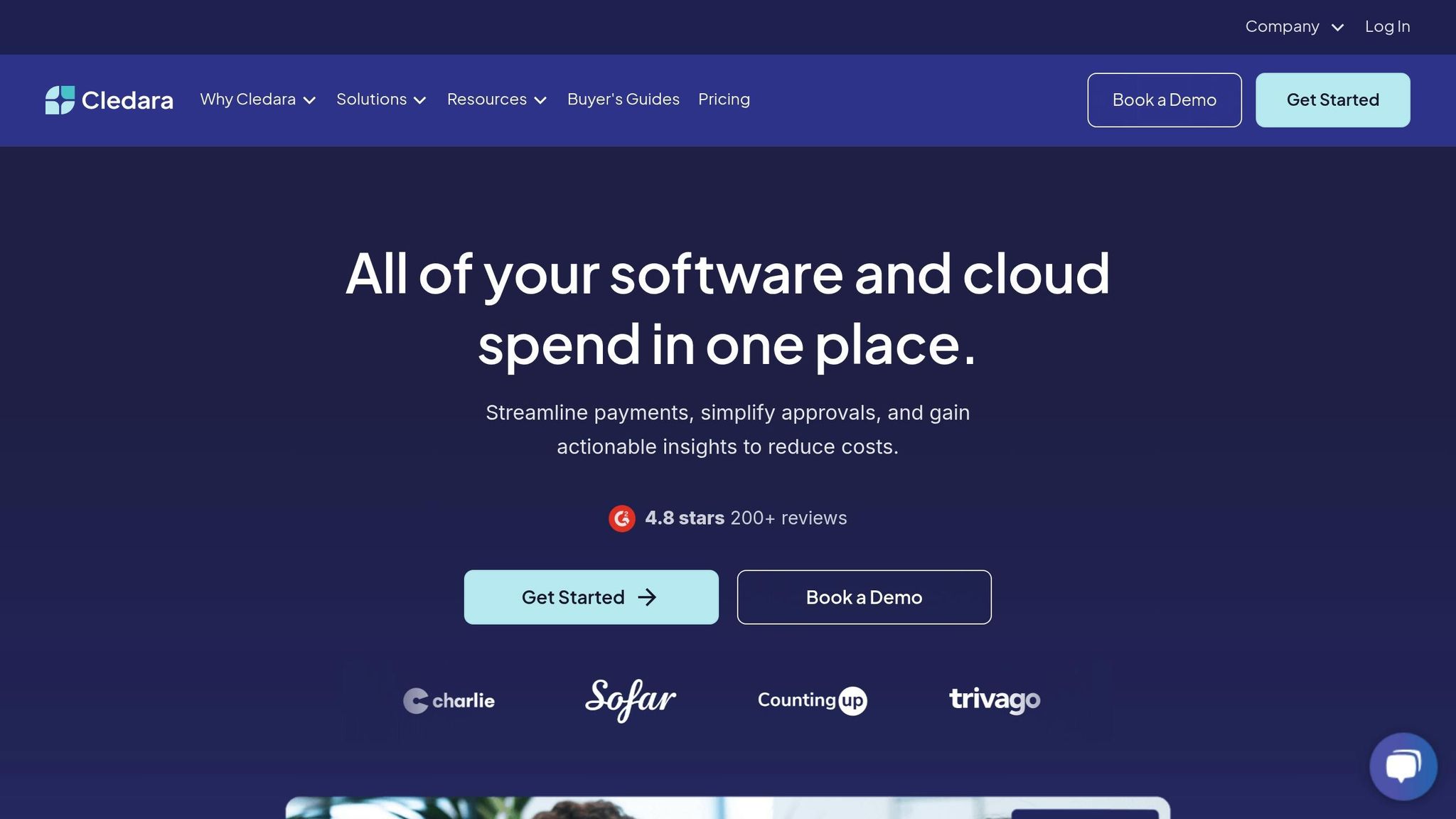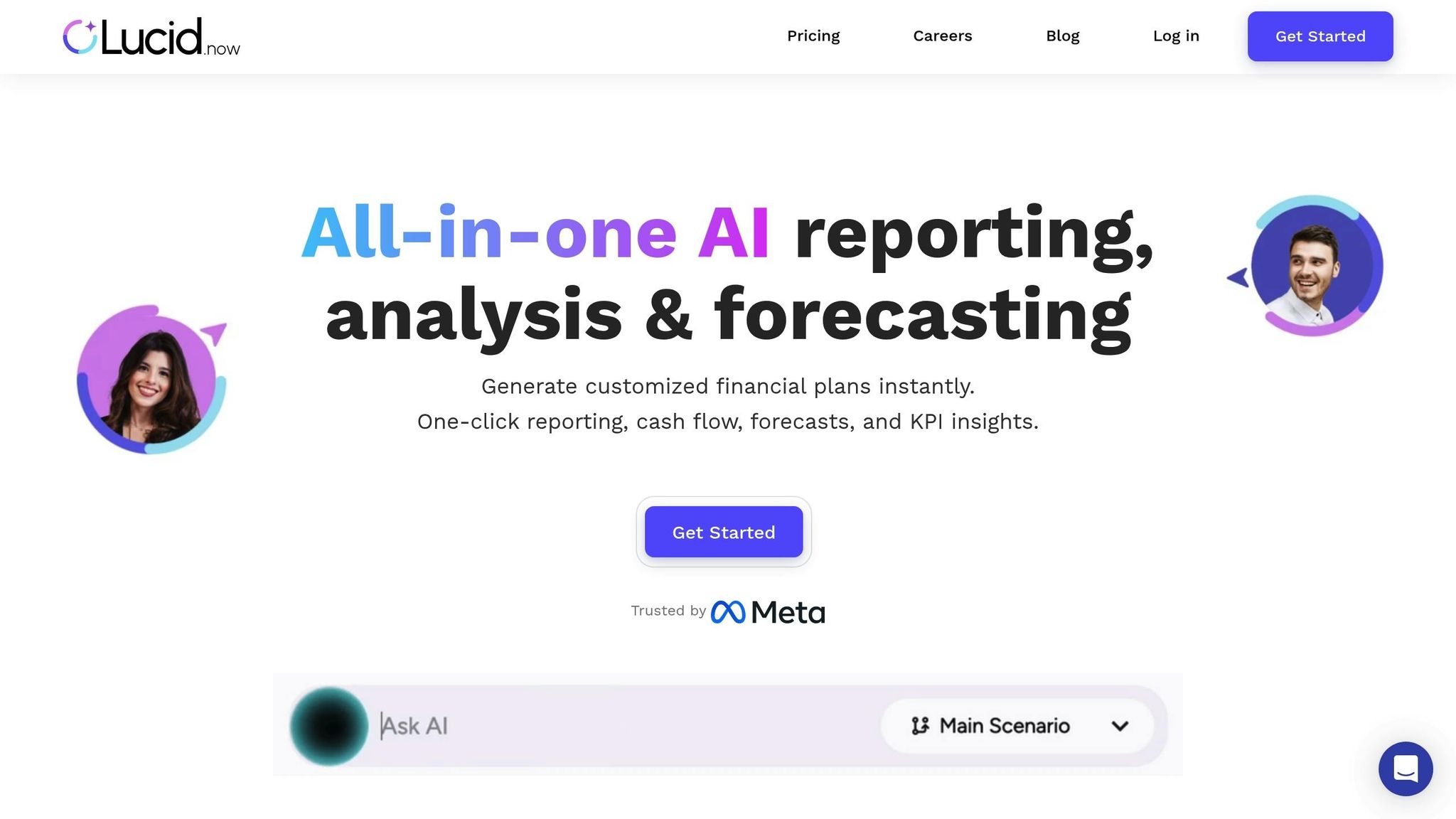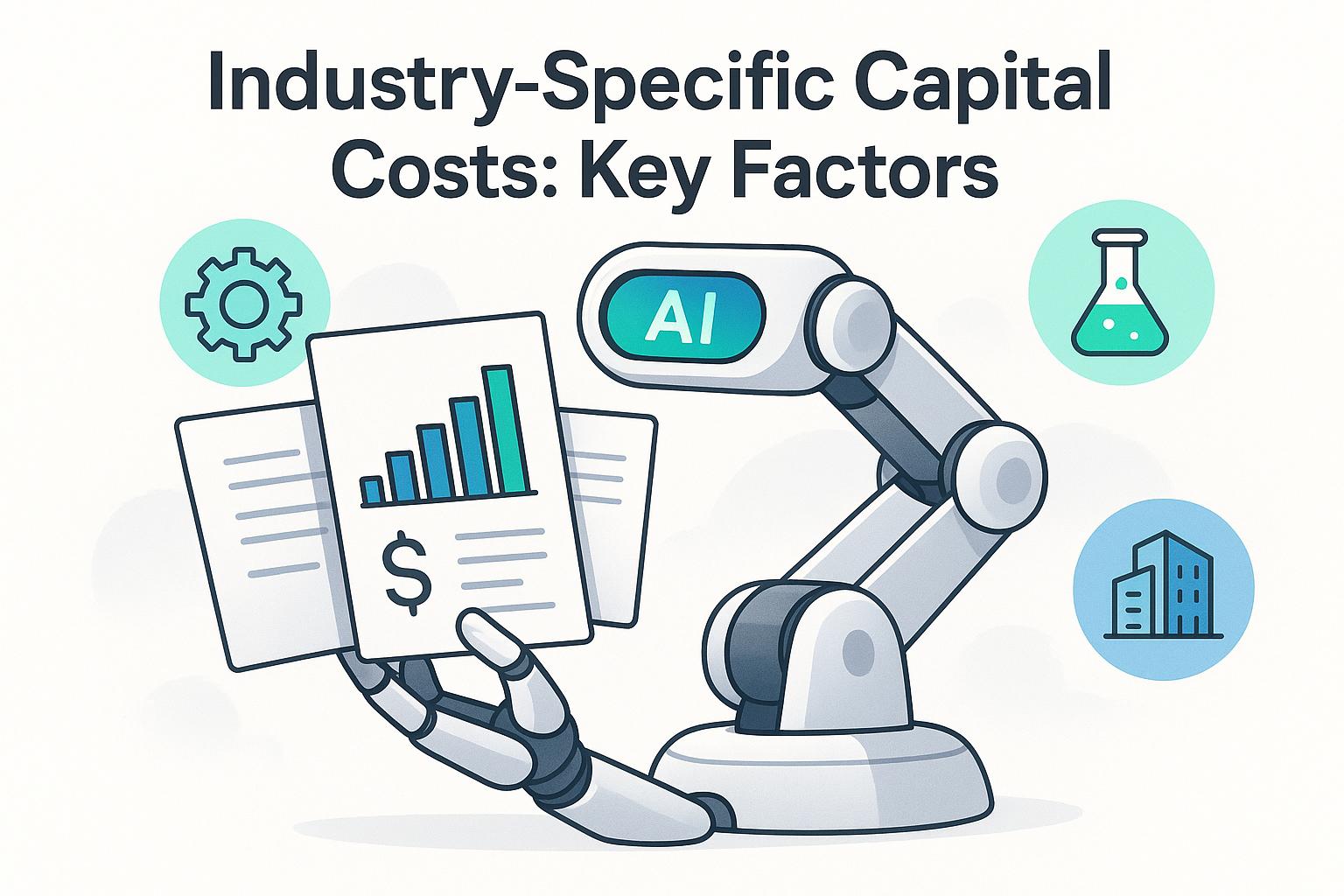Want to save on SaaS tools without slowing down your business? Here's how you can cut costs while keeping your operations running smoothly:
- Review your SaaS stack: List all subscriptions, track costs, and eliminate unused tools.
- Manage licenses smartly: Match licenses to actual usage, remove inactive accounts, and consolidate overlapping tools.
- Negotiate better deals: Time negotiations strategically, look for discounts, and compare market rates.
- Use AI tools: Monitor spending, analyze usage, and plan ahead with tools like Lucid Financials.
- Build cost-aware teams: Set clear spending rules, train teams on financial impact, and share spending insights.
These steps ensure you're spending wisely while maintaining growth. Keep reading to learn how to implement them effectively.
Optimizing Costs with Cledara - How to cut software spend

Review Current SaaS Tools
Take a closer look at your SaaS stack to uncover ways to cut costs without hindering growth. This review helps you manage licenses better and prepare for smarter negotiations down the line.
List All SaaS Subscriptions
Start by creating a detailed list of your subscriptions, including:
- Costs: Note monthly and annual expenses for each tool.
- Licenses: Record the number of active licenses.
- Renewal Dates: Keep track of when each subscription renews.
- Ownership: Identify which department is responsible for each tool.
Using tools like Lucid Financials can make this process easier. It tracks costs and usage in real time, giving you a clear picture of your total SaaS spending and where you might save.
Find Unused Tools
Check usage data to pinpoint tools that are underutilized. Look at factors like:
- How often users log in
- Which features are actually being used
- The ratio of active to inactive users
- How the tool impacts workflows
If you find overlapping tools, consider consolidating them to save money.
Set Up Regular Reviews
To stay on top of your SaaS stack, establish a consistent review process:
1. Quarterly audits
Every three months, review usage, costs, ROI, and gather user feedback.
2. Monthly monitoring
Keep an eye on new requests, changes in users, upcoming renewals, and any budget shifts each month.
3. Annual strategic assessment
Once a year, take a deeper dive to refine contracts, eliminate redundant tools, and focus on long-term value.
Manage Licenses Effectively
Managing licenses well can help cut costs while keeping your team productive. By ensuring your licenses match actual usage, you can avoid unnecessary expenses without impacting performance.
Align Licenses with Usage
Use tools like Lucid Financials to analyze how your team uses their subscriptions. Focus on these areas:
- Feature usage: Do teams really need premium features, or will a basic plan work?
- Access levels: Figure out who needs admin permissions versus standard access.
- Frequency of use: Check how often each person uses the tool.
For example, if your marketing team only uses basic features but is on a premium plan, switching to a simpler option could save money. Once you've adjusted subscriptions, look into inactive licenses to cut more costs.
Eliminate Unused Licenses
Take a systematic approach to handle inactive licenses:
- Review usage data and cancel licenses for former, inactive, or seasonal users.
- Automate license deactivation during offboarding.
- Set up a shared license pool for temporary access.
These steps ensure you're not paying for licenses that aren't being used.
Combine Similar Tools
After optimizing licenses and removing inactive users, check for overlapping tools. Consolidating tools can simplify workflows and save money. Here’s how to approach it:
- Look at overlapping features, total costs, and how your team will be affected.
- Consider both direct expenses (like subscriptions) and indirect costs (like training or disruptions).
- Plan for any workflow changes or training needs before making the switch.
Lucid Financials can help track the financial impact of these changes and estimate savings, so you can streamline tools without disrupting productivity.
Get Better SaaS Deals
Once your licensing is streamlined, it's time to focus on negotiating better SaaS deals.
Timing Matters in Negotiations
When you negotiate can significantly impact the rates you secure. Here are a few strategic moments to consider:
- Quarter-end or year-end: Vendors are often more flexible with pricing as they aim to hit their sales targets.
- Renewal periods: Start discussions well before your renewal date to avoid last-minute pressure.
- Growth milestones: If you're planning to expand, use this as a bargaining tool to negotiate better rates for a larger user base.
Tools like Lucid Financials can help you predict renewal timelines and growth trends, giving you solid data to back your negotiation strategy. After timing, the next step is finding available discounts.
Look for Discounts
SaaS providers often have discounts that aren't always obvious. Here's how to uncover them:
- Payment terms: Opt for annual or multi-year commitments instead of monthly payments to save money.
- Volume pricing: Consolidate licenses across teams or departments for lower per-user costs.
- Prepayment options: Paying upfront can lead to additional savings.
With Lucid Financials, you can evaluate the cash flow impact of different payment structures and identify the best option for your budget.
Compare Your Rates to the Market
Before entering negotiations, make sure your current rates are competitive. Here's how:
- Review your usage and per-user costs.
- Check publicly available pricing for similar services.
- Factor in your company's size and industry position.
Using Lucid Financials to analyze this data ensures you're getting a fair deal without hindering your growth potential.
sbb-itb-17e8ec9
Use AI Tools for Cost Management
Keeping SaaS costs in check requires effective tracking and analysis. AI-powered tools make it easier to monitor and manage software spending efficiently.
Track All SaaS Tools in One Place
AI platforms offer several helpful features:
- Real-time monitoring: Keep an eye on spending patterns and trends as they happen.
- Usage insights: Spot tools that aren’t being used to their full potential.
- Automated alerts: Receive notifications about unusual spending or upcoming renewals.
- Integration options: Connect seamlessly with your existing systems.
These tools analyze how your team uses software, track spending habits, and even provide insights into user behavior. This makes it easier to find ways to cut costs without losing access to essential tools. For example, Lucid Financials uses AI to not only provide a clear overview of your current SaaS spending but also predict and optimize future investments.
Plan with Lucid Financials

Lucid Financials takes your cost management a step further by integrating with tools like QuickBooks and payroll systems. It helps you stay ahead with features like:
- Scenario planning and benchmarking: Compare subscription plans and pricing against industry benchmarks to make informed choices.
- Growth forecasting: Plan for future software needs as your team expands.
"As our company grows, budgeting and cash flow management have become crucial. The features provided are essential and have greatly streamlined these processes for us." - Luka Mutinda, Founder and CEO @Dukapaq
Build Cost-Aware Teams
Encourage financial responsibility by setting clear guidelines for SaaS spending. When teams understand how their software decisions affect the business, they can make smarter choices that balance efficiency and growth.
Create Clear Buying Rules
Establish straightforward rules for software purchases:
Set spending limits:
- Under $100/month: Requires team lead approval
- $100-$500/month: Needs department head review
- Over $500/month: Requires executive approval
Document the decision-making process: Before purchasing any tool, require teams to address these questions:
- What specific problem does this tool solve?
- How many team members will actively use it?
- What other options were considered?
- Will it integrate smoothly with existing tools?
Train Teams on Cost Awareness
Helping teams understand the financial impact of their choices strengthens your SaaS strategy. Employees should see how their decisions affect overall costs and business growth.
Share spending insights:
- Provide monthly reports detailing spending by department
- Highlight the per-employee cost of major tools
- Show the financial impact of unused licenses
Establish cost benchmarks:
- Average SaaS spending per employee in your industry
- Recommended percentage of revenue allocated to software
- Cost comparisons across subscription tiers
With tools like Lucid Financials, teams can compare their software spending to industry standards and make informed decisions about their investments.
Schedule quarterly reviews, open communication channels for sharing tool recommendations, and celebrate teams that successfully manage costs.
Conclusion
Managing SaaS costs effectively requires a clear strategy that balances reducing expenses with meeting business needs. Regular reviews and careful license management can help cut unnecessary costs while keeping operations running smoothly.
AI-powered tools have changed the way companies handle SaaS expenses. Real-world examples highlight the importance of teams understanding how their software choices impact finances. When teams are aware of these costs, they make smarter decisions that align with both operational goals and budget limits.
Building a cost-conscious mindset - supported by regular audits, efficient license handling, and planning with AI tools like Lucid Financials - helps businesses achieve steady growth. By adopting these methods, companies can ensure every software investment serves its purpose. As Erez Lugashi, Founder and CEO of Abilisense, puts it:
"Keeping track of my finances used to be overwhelming, but now it's much simpler."
Through careful license management, negotiations, and AI-driven planning, businesses can grow while keeping SaaS costs in check. This ongoing process requires teamwork and the right tools to ensure software investments contribute to the bottom line without unnecessary spending.
FAQs
How can I identify and eliminate underused SaaS tools to save costs?
To identify underutilized SaaS tools, start by reviewing usage data and user activity reports provided by the platforms themselves. Look for tools with low login rates, minimal active users, or features that go unused. Additionally, gather feedback from your team to understand which tools are essential and which may no longer align with your business needs.
Once you've identified underused tools, evaluate their costs versus their value to your operations. If a tool isn't delivering measurable benefits, consider canceling or downgrading your subscription. Regularly auditing your SaaS stack can help ensure you're only paying for tools that actively support your business growth.
What are the best strategies for negotiating SaaS contracts to save money without impacting growth?
To negotiate better SaaS deals while keeping your business growth on track, start by reviewing your current usage. Identify underutilized features or unused licenses and use this data to negotiate for a plan that aligns with your actual needs. Bundling services or committing to longer-term contracts can also help secure discounts. Additionally, research industry benchmarks to understand fair pricing and leverage this information during negotiations.
For a more efficient approach to managing SaaS costs, consider using tools like Lucid Financials to analyze your financial data. With real-time insights, you can better understand your spending patterns and make informed decisions when negotiating contracts, ensuring cost savings without compromising on operational efficiency.
How can AI tools like Lucid Financials help my business reduce SaaS costs while supporting growth?
AI tools like Lucid Financials make it easier to manage and optimize SaaS expenses by providing real-time financial insights and automated planning. With features like instant financial plans, scenario comparisons, and detailed spending analysis, you can identify areas to cut costs without compromising your business operations.
By integrating with systems like QuickBooks, payroll platforms, and banks, Lucid Financials offers a seamless way to track cash flow, create budgets, and forecast expenses. This helps you allocate resources more effectively and make data-driven decisions to support sustainable growth.


